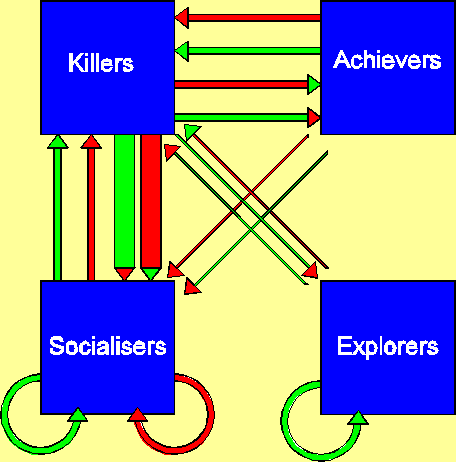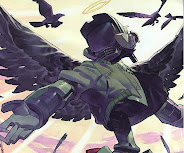 Lead Designer of Ultima Online, Creative Director of Star Wars Galaxy, and founder of Area, Raph Koster, has written a book called A Theory of Fun for Game Design. He digs deeply into the theories of fun in game design and hits all sorts of ideas, such as difficulty, people and learning etcetera. He infers that unpredictability is essential to fun gameplay design. Koster says, “Since games are teaching tools, players seeking to advance in a game will always try to optimize what they are doing. If they are clever and see an optimal path - an Alexandrine solution to a Gordian problem - they’ll do that instead of the ‘intended gameplay.’ They will try to make the gameplay as predictable as possible. This then means it becomes boring, and not fun.” Later, he talks about observations he has made in his game design, as well as in his research and in observing his children at play. He does not have a specific list that one should hit to make a game fun, but he does lay out his philosophy behind games and what make them fun for different people and why.
Lead Designer of Ultima Online, Creative Director of Star Wars Galaxy, and founder of Area, Raph Koster, has written a book called A Theory of Fun for Game Design. He digs deeply into the theories of fun in game design and hits all sorts of ideas, such as difficulty, people and learning etcetera. He infers that unpredictability is essential to fun gameplay design. Koster says, “Since games are teaching tools, players seeking to advance in a game will always try to optimize what they are doing. If they are clever and see an optimal path - an Alexandrine solution to a Gordian problem - they’ll do that instead of the ‘intended gameplay.’ They will try to make the gameplay as predictable as possible. This then means it becomes boring, and not fun.” Later, he talks about observations he has made in his game design, as well as in his research and in observing his children at play. He does not have a specific list that one should hit to make a game fun, but he does lay out his philosophy behind games and what make them fun for different people and why. Nicole Lazzaro of XEODesign, Inc. conducted a study on why people play games and the four keys to more emotion without story. She infers that fun is an emotion, and that we have fun when emotion is evoked from a game. Lazzaro states four keys which she names: fiero, curiosity, amuse and relax, or hard fun, easy fun, people fun and serious fun respectively. She studied all sorts of people from hardcore gamers to non-gamers and took note of their reactions when they played games. The study found that evoking certain types of emotion lead to certain types of fun. For example, when a player overcomes a difficult or frustrating challenge, they have a sense of triumph or fiero. The player feels good about himself and also has a story to relate. This sense of accomplishment is fun for the player. Lazzaro looks into the reasons why people have fun playing games and shows goals that a designer should strive towards when creating games. They should look toward evoking one or many of these certain emotions from their players.
Nicole Lazzaro of XEODesign, Inc. conducted a study on why people play games and the four keys to more emotion without story. She infers that fun is an emotion, and that we have fun when emotion is evoked from a game. Lazzaro states four keys which she names: fiero, curiosity, amuse and relax, or hard fun, easy fun, people fun and serious fun respectively. She studied all sorts of people from hardcore gamers to non-gamers and took note of their reactions when they played games. The study found that evoking certain types of emotion lead to certain types of fun. For example, when a player overcomes a difficult or frustrating challenge, they have a sense of triumph or fiero. The player feels good about himself and also has a story to relate. This sense of accomplishment is fun for the player. Lazzaro looks into the reasons why people have fun playing games and shows goals that a designer should strive towards when creating games. They should look toward evoking one or many of these certain emotions from their players.However, despite all of this, no one challenge or aspect of a game can be fun for everyone. Designers also have to look into what types of players are out there and what will be fun for
 each type. Richard Bartle writes about the four different types of players in a paper titled "Players Who Suit MUDs". He states the four types of players are: Achievers, players who like to get everything in the game and the highest level possible; Explorers, players who like to find everything in a game, all the routes and secrets; Socialisers, players who like to meet other people and interact with them in game; and Killers, people who like to kill other players and grief them in game. A good game designer creates a game that can cater to each type of player’s interest while not allowing for one player’s interest to overshadow another’s. For example, a game designer needs to find a way for there to be Killers in a game with Socialisers and let them both are able to have fun at the same time. All in all there needs to be a balance of interest for each type of player to keep them all interested in the game and not become frustrated. This is a very difficult task, and one that game designers are constantly coming up against. Different designers find different ways of solving this problem, and each is significant to its own designer. Also, “Fun” is a very abstract and subjective topic, but there are ways to evoke it from players and keep them coming back to a game that they love.
each type. Richard Bartle writes about the four different types of players in a paper titled "Players Who Suit MUDs". He states the four types of players are: Achievers, players who like to get everything in the game and the highest level possible; Explorers, players who like to find everything in a game, all the routes and secrets; Socialisers, players who like to meet other people and interact with them in game; and Killers, people who like to kill other players and grief them in game. A good game designer creates a game that can cater to each type of player’s interest while not allowing for one player’s interest to overshadow another’s. For example, a game designer needs to find a way for there to be Killers in a game with Socialisers and let them both are able to have fun at the same time. All in all there needs to be a balance of interest for each type of player to keep them all interested in the game and not become frustrated. This is a very difficult task, and one that game designers are constantly coming up against. Different designers find different ways of solving this problem, and each is significant to its own designer. Also, “Fun” is a very abstract and subjective topic, but there are ways to evoke it from players and keep them coming back to a game that they love.



1 comment:
This post was a very interesting subject and you used good sources to quote from. "Why we play games?" is a, especially as much as we do, is something that I have even wondered about. I like the fact you put in Raph Koster's theory that unpredictability is essential to game play. However I was a little unclear on the quote. Raph says "If they are clever and see and optimal path they'll do that instead of the 'intended gameplay.' They will try to make the gameplay as predictable as possible. This then means it becomes boring, and not fun."
I'm not sure if he is saying players are making the game boring or designers.
Also I would just suggest that you put in some of your theories on gameplay or at least synthesize your ideas with the ones you state in the post to put more of your voice in the blog. Basically say why you think people play games and how would you design a game that's more enjoyable based on the ideas you researched.
Post a Comment